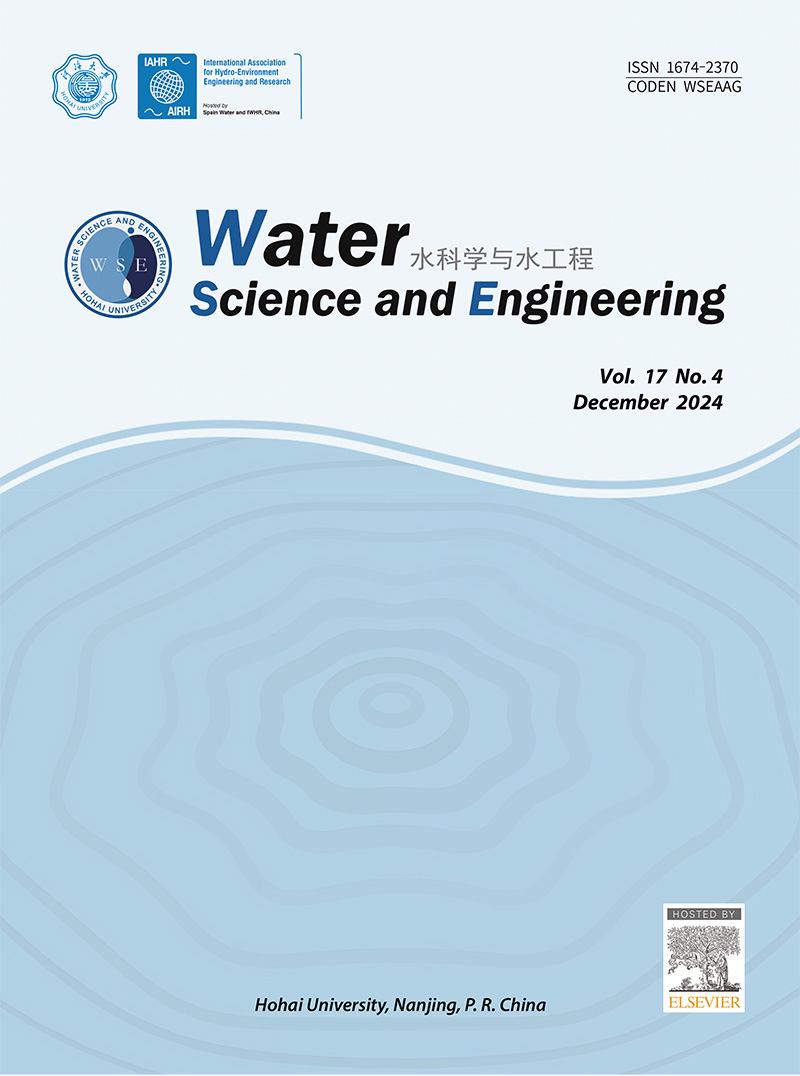Simultaneous assessment of effects of variations in temperature and hydraulic retention time on membrane fouling in membrane bioreactors
IF 4.3
Q1 WATER RESOURCES
引用次数: 0
Abstract
Membrane fouling remains the primary economic barrier to the widespread implementation of membrane bioreactors (MBRs), despite the fact that they lead to the production of high-quality effluent. Operational conditions are critical factors influencing membrane fouling. This study aimed to investigate the simultaneous impacts of temperature and hydraulic retention time (HRT) variations on membrane fouling. Experiments were conducted at three different temperatures (18°C, 25°C, and 32°C) and HRTs (6 h, 9 h, and 15 h). The results demonstrated that increases in both temperature and HRT contributed to a reduction in membrane fouling. Additionally, a positive interaction between temperature and HRT was observed in the linear slope variation of membrane permeation, with temperature variations exerting a greater influence on membrane fouling than HRT variations. Fouling factor analysis revealed that increases in temperature and HRT led to decreased concentrations of soluble microbial products (SMP) and extracellular polymeric substances (EPS), particularly carbohydrates, in the activated sludge. Analyses of the cake layer of the membrane indicated that increasing temperature and HRT reduced EPS levels, particularly polysaccharides and proteins; altered primary protein structure; and increased the mean particle size distribution. Ultimately, these changes led to reductions in both reversible and irreversible hydraulic resistances. This study highlights the importance of optimizing operational parameters such as temperature and HRT to enhance membrane performance and treatment efficiency in MBR systems while mitigating fouling.
温度和水力停留时间变化对膜生物反应器中膜污染影响的同时评价
膜污染仍然是膜生物反应器(mbr)广泛实施的主要经济障碍,尽管膜生物反应器可以产生高质量的出水。操作条件是影响膜污染的关键因素。本研究旨在探讨温度和水力停留时间(HRT)变化对膜污染的影响。实验在3种不同温度(18°C、25°C和32°C)和hrt (6 h、9 h和15 h)下进行。结果表明,温度和HRT的增加都有助于减少膜污染。此外,在膜渗透的线性斜率变化中观察到温度与HRT之间的正交互作用,温度变化对膜污染的影响大于HRT变化。污染因素分析表明,温度和HRT的升高导致活性污泥中可溶性微生物产物(SMP)和细胞外聚合物(EPS)的浓度下降,尤其是碳水化合物。对膜饼层的分析表明,温度升高和HRT升高可降低EPS水平,尤其是多糖和蛋白质;初级蛋白结构改变;增大了平均粒径分布。最终,这些变化导致可逆和不可逆水力阻力的降低。该研究强调了优化操作参数的重要性,如温度和HRT,以提高膜的性能和处理效率,同时减轻MBR系统的污染。
本文章由计算机程序翻译,如有差异,请以英文原文为准。
求助全文
约1分钟内获得全文
求助全文
来源期刊

Water science and engineering
WATER RESOURCES-
CiteScore
6.60
自引率
5.00%
发文量
573
审稿时长
50 weeks
期刊介绍:
Water Science and Engineering journal is an international, peer-reviewed research publication covering new concepts, theories, methods, and techniques related to water issues. The journal aims to publish research that helps advance the theoretical and practical understanding of water resources, aquatic environment, aquatic ecology, and water engineering, with emphases placed on the innovation and applicability of science and technology in large-scale hydropower project construction, large river and lake regulation, inter-basin water transfer, hydroelectric energy development, ecological restoration, the development of new materials, and sustainable utilization of water resources.
 求助内容:
求助内容: 应助结果提醒方式:
应助结果提醒方式:


